7 Deadly Sins Of Landscape Lighting
Don't Let These Common Mistakes Ruin Your Landscape Lighting
7 Deadly Sins of Landscape Lighting
The Most Common Mistakes In Landscape Lighting & How We Avoid Them.
7 Deadly Sins Of Landscape Lighting
The Most Common Mistakes In Landscape Lighting & How We Avoid Them
1. Power and Voltage Mismanagement
Traditional AC multi-tap transformers, invented over 30 years ago, are still widely used, yet they are ill-suited for modern LED lighting. LEDs require clean, constant DC voltage to operate efficiently and reliably. Using AC transformers creates voltage fluctuations and VA (volt-amp) losses, which can increase energy consumption by up to 50%. Lifetime Lighting Systems uses specialized DC LED power drivers, ensuring optimal performance, longevity, and energy savings.
Voltage drop is another major issue, often overlooked or misunderstood. Proper voltage at every fixture is essential and can only be confirmed using a voltmeter and amp probe. Our team uses the Critical Three Test:
1. Measure amperage on each wire run.
2. Confirm voltage at every fixture.
3. Ensure transformer output stays within rated amps.
2. Lack of Corrosion and Moisture Protection
Many lighting systems use aluminum fixtures and low-grade materials prone to corrosion and failure. Our fixtures are made with durable brass, copper, or ACM (Advanced Composite Material), ensuring longevity in harsh outdoor environments. Moisture wicking in inferior wire can lead to corrosion and system failure. We use MAX FLEX™ wire made with 99.9% virgin copper and UV-stabilized insulation to prevent cracking and water intrusion. We also use dielectric grease in sockets and sealed connections to block moisture migration.
3. Unreliable Connections
Most wire connections are not designed for underground, wet environments. We avoid cheap wire nuts and use mechanical copper crimps with dielectric gel-filled tubes to create secure, waterproof connections. Proper placement at the fixture or within one inch of the stake ensures long-term reliability.
4. Lack of System Safety
Low voltage doesn't mean low risk. Poorly fused systems using generic AC transformers with 25-amp breakers can lead to overloads and potential fires. We use DC power drivers with appropriate fuse protection that mirrors automotive standards, where each load has its own correctly rated fuse.
5. Thoughtless Lighting Design
Lighting design is a professional discipline, not a guessing game. We provide live demos and real examples of our work. Proper design often requires more fixtures, not fewer, to create smooth, balanced lighting. Each fixture must be placed based on viewing angles and the reflective, absorbent, or translucent qualities of surfaces.
6. Glare and Light Pollution
Even one poorly placed fixture can ruin a lighting portrait. We use fixtures with adjustable shrouds, hex louvers, and lens options to control glare and eliminate stray light. Precision in placement and beam control is essential for beautiful, effective lighting.
7. Failure to Future-Proof Your System
Landscapes evolve, and lighting systems must adapt. We install every system with flexibility in mind, including extra wire for fixture relocation and compatibility with expandability. Our fixtures use replaceable LED lamps instead of integrated units that must be discarded when they fail. Regular maintenance, including lens cleaning and fixture adjustment, is essential to preserve the system's effectiveness and aesthetic appeal.

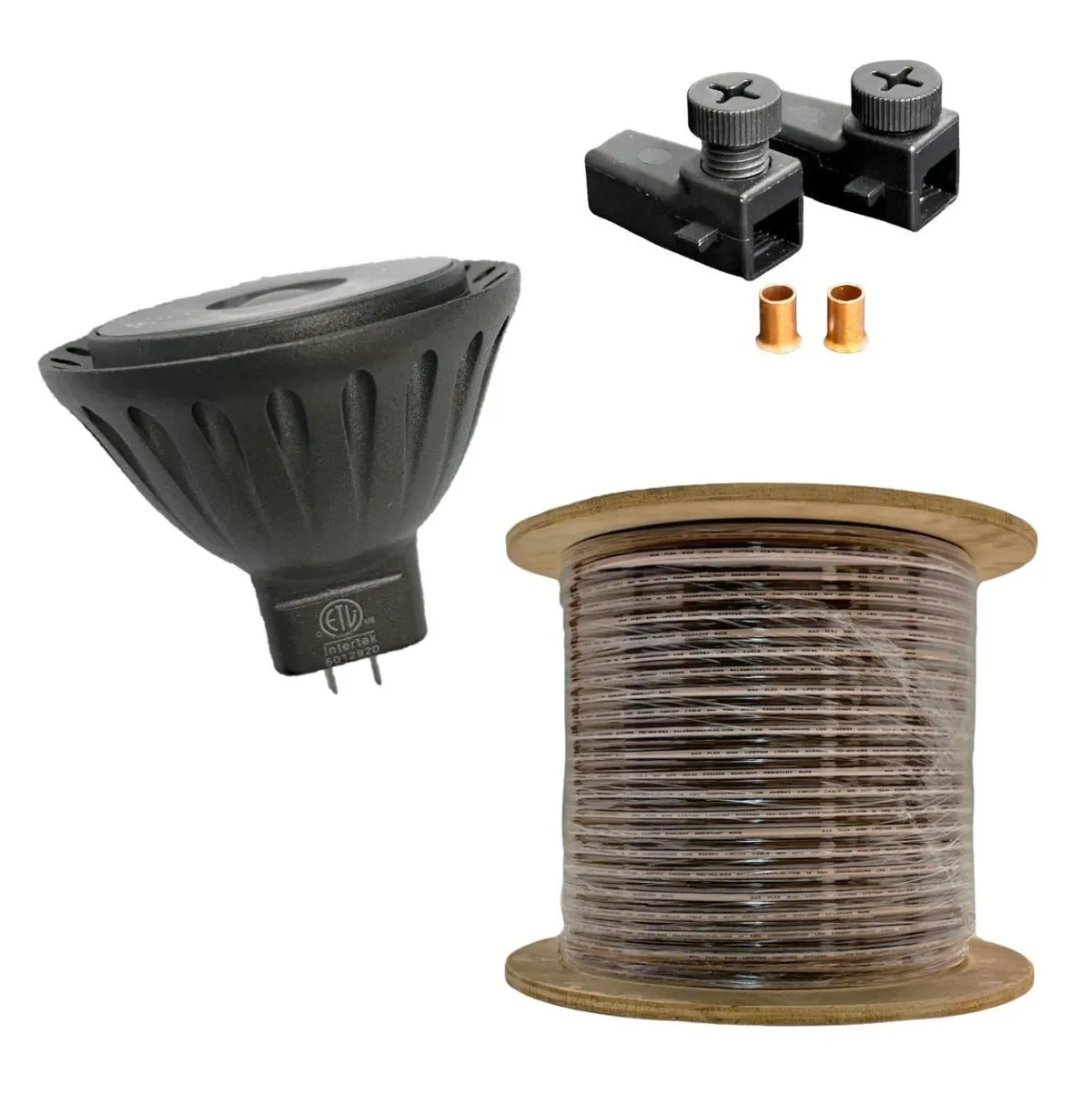
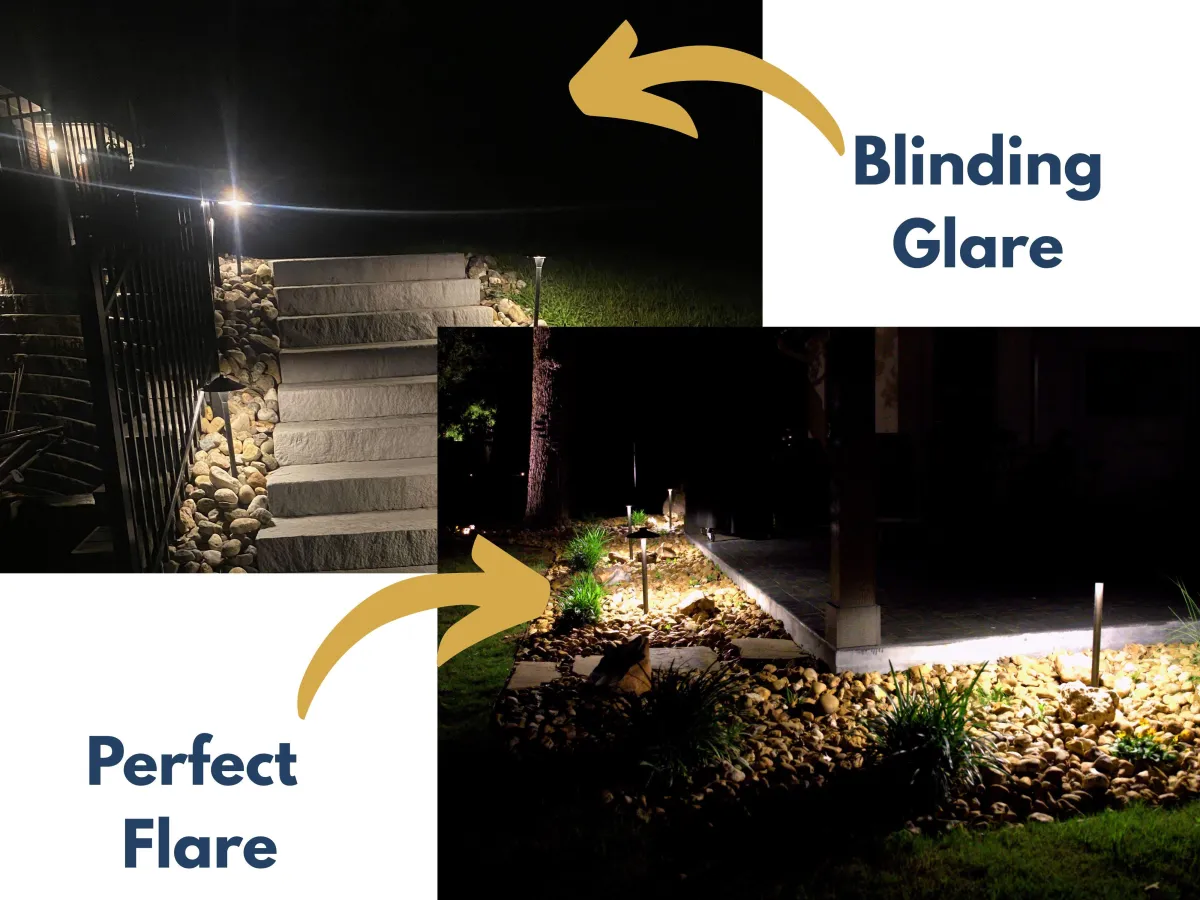
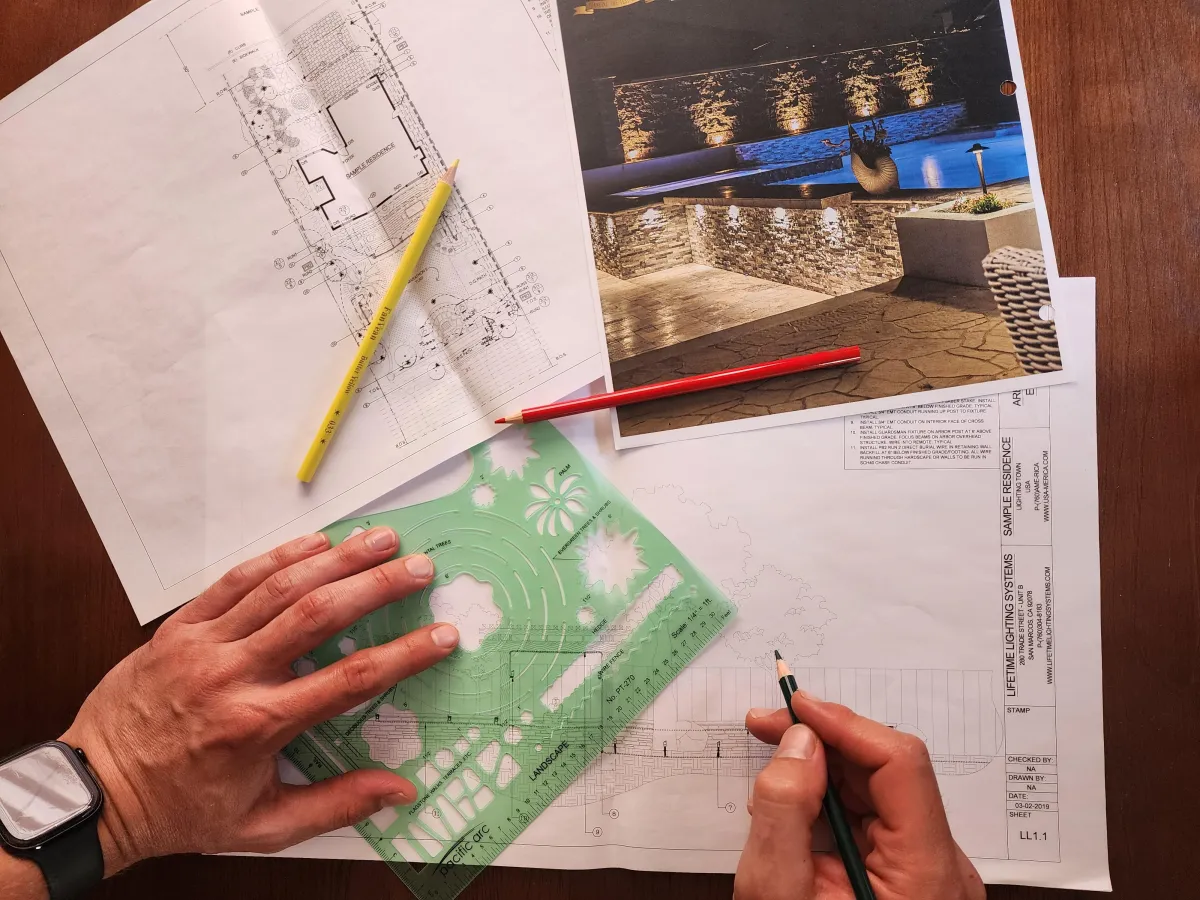
7 Deadly Sins Of Landscape Lighting
The Most Common Mistakes In Landscape Lighting & How We Avoid Them
1. Power and Voltage Mismanagement
Traditional AC multi-tap transformers, invented over 30 years ago, are still widely used, yet they are ill-suited for modern LED lighting. LEDs require clean, constant DC voltage to operate efficiently and reliably. Using AC transformers creates voltage fluctuations and VA (volt-amp) losses, which can increase energy consumption by up to 50%. Lifetime Lighting Systems uses specialized DC LED power drivers, ensuring optimal performance, longevity, and energy savings.
Voltage drop is another major issue, often overlooked or misunderstood. Proper voltage at every fixture is essential and can only be confirmed using a voltmeter and amp probe. Our team uses the Critical Three Test:
1. Measure amperage on each wire run.
2. Confirm voltage at every fixture.
3. Ensure transformer output stays within rated amps.
2. Corrosion and Moisture Protection
Many lighting systems use aluminum fixtures and low-grade materials prone to corrosion and failure. Our fixtures are made with durable brass, copper, or ACM (Advanced Composite Material), ensuring longevity in harsh outdoor environments. Moisture wicking in inferior wire can lead to corrosion and system failure. We use MAX FLEX™ wire made with 99.9% virgin copper and UV-stabilized insulation to prevent cracking and water intrusion. We also use dielectric grease in sockets and sealed connections to block moisture migration.
3. System Safety
Low voltage doesn't mean low risk. Poorly fused systems using generic AC transformers with 25-amp breakers can lead to overloads and potential fires. We use DC power drivers with appropriate fuse protection that mirrors automotive standards, where each load has its own correctly rated fuse.
4. Reliable Connections
Most wire connections are not designed for underground, wet environments. We avoid cheap wire nuts and use mechanical copper crimps with dielectric gel-filled tubes to create secure, waterproof connections. Proper placement at the fixture or within one inch of the stake ensures long-term reliability.
5. Glare and Light Pollution
Even one poorly placed fixture can ruin a lighting portrait. We use fixtures with adjustable shrouds, hex louvers, and lens options to control glare and eliminate stray light. Precision in placement and beam control is essential for beautiful, effective lighting.
6. Thoughtful Lighting Design
Lighting design is a professional discipline, not a guessing game. We provide live demos and real examples of our work. Proper design often requires more fixtures, not fewer, to create smooth, balanced lighting. Each fixture must be placed based on viewing angles and the reflective, absorbent, or translucent qualities of surfaces.
7. Future-Proofing Your System
Landscapes evolve, and lighting systems must adapt. We install every system with flexibility in mind, including extra wire for fixture relocation and compatibility with expandability. Our fixtures use replaceable LED lamps instead of integrated units that must be discarded when they fail. Regular maintenance, including lens cleaning and fixture adjustment, is essential to preserve the system's effectiveness and aesthetic appeal.
Outdoor Lighting Solutions for Every Situation
Professional service when only the best will do.
Outdoor Lighting Solutions for Every Situation
Professional service when only the best will do.
© Copyright 2025. Signature Outdoor Lighting. All Rights Reserved.
Privacy Policy
Terms of Use


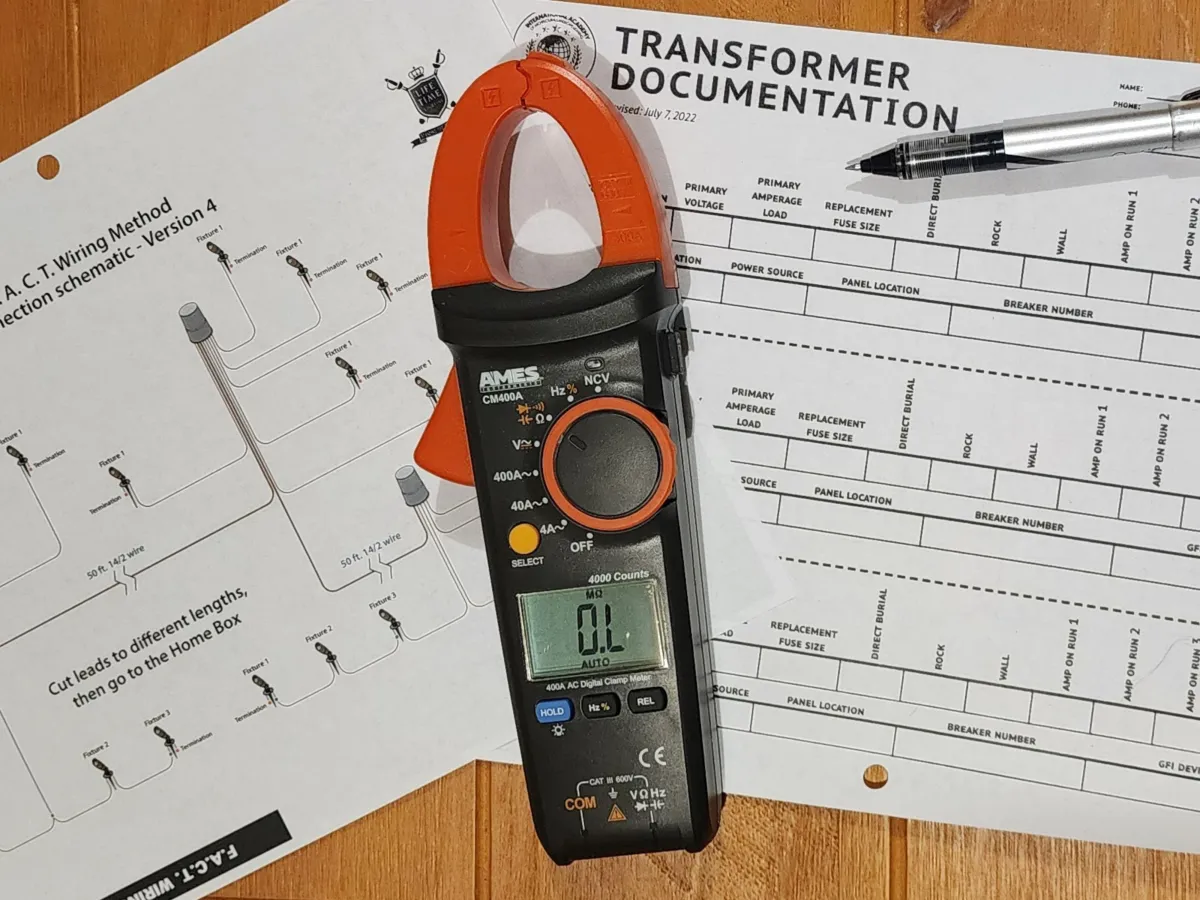


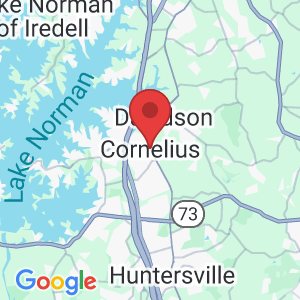
Facebook
Instagram
Youtube